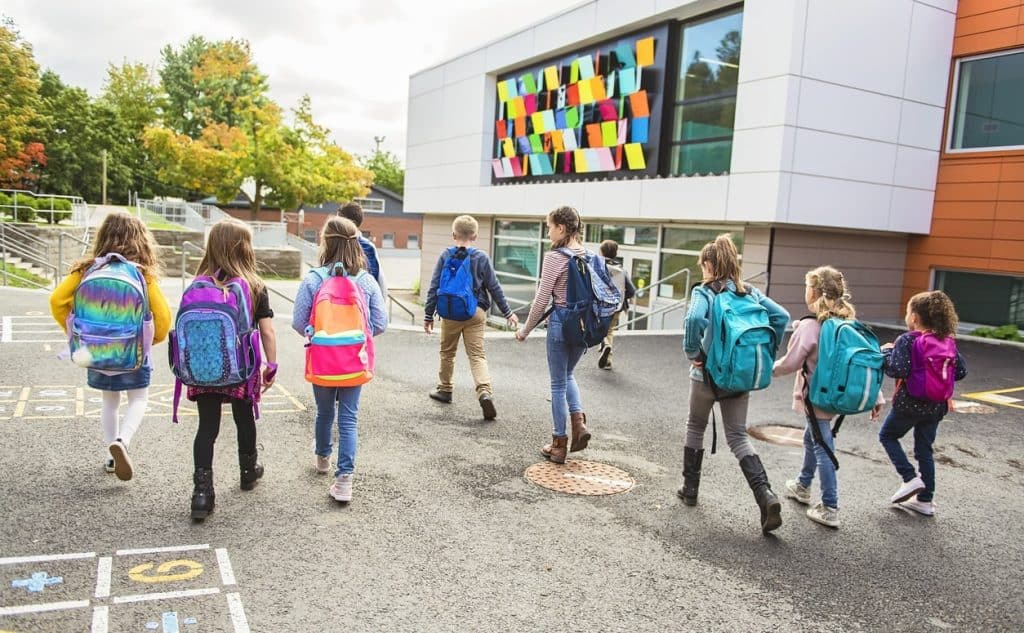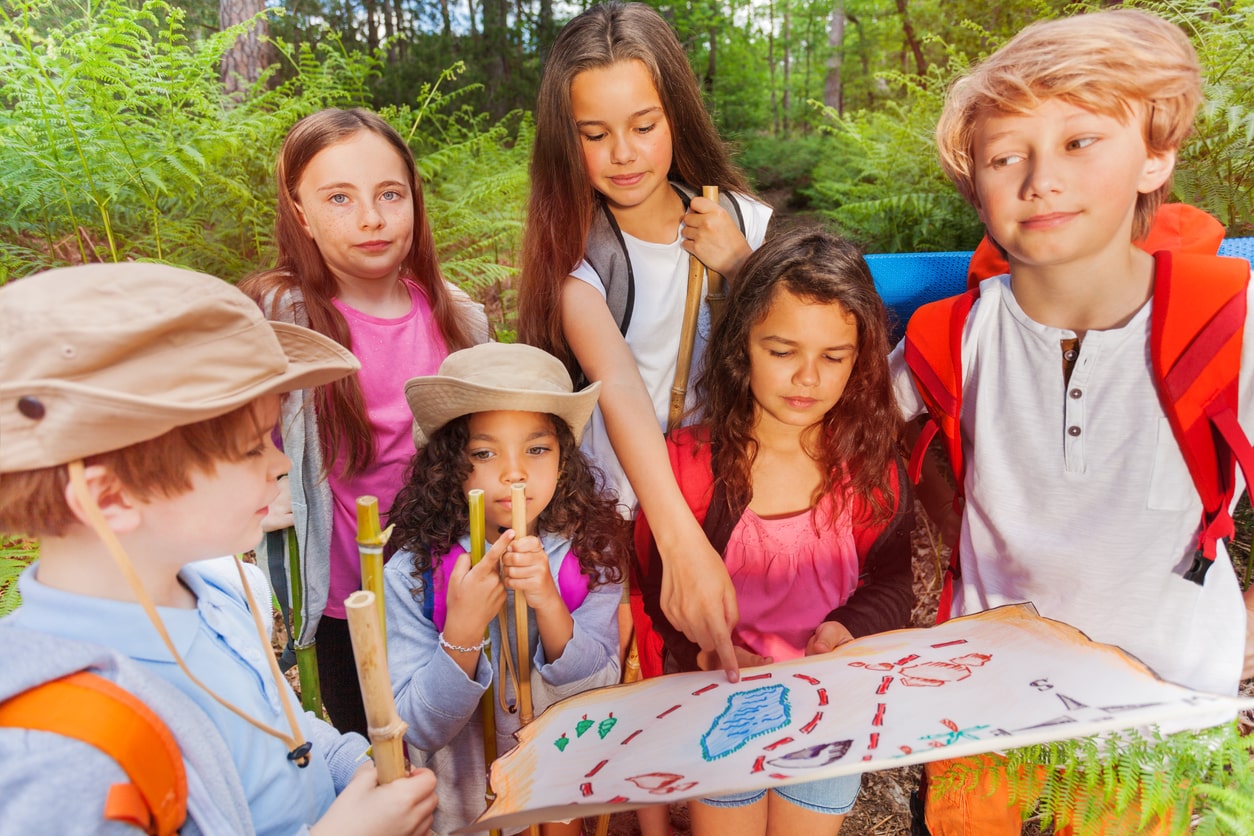The use of outdoor learning environments has long been a feature of Scandinavian education. As a proud Finnish EdTech business, Sanako recognises the benefit that students gain when given the opportunity to learn outdoors. Importantly, this change in environment can help make the learning experience more engaging and interesting, which has a huge positive impact on students’ motivation and enthusiasm to learn.
This blog post explores how language educators can use the great outdoors in their teaching. We will consider the preparation needed to ensure success as well as providing some ideas of language learning activities that could be used. Use these as a starting point for your creativity – learning outdoors is as much about getting out in urban environments as it is about being in nature. Make the most of the opportunity to be inspired and to inspire your students!
Planning and preparation before heading to outdoors
First of all, let’s be realistic. Outdoor language learning will not be appropriate or even possible for every educator or institution. Weather conditions might make it difficult; students might need access to bathroom facilities; some parents might not approve and older students will take some convincing. But for all of the challenges, there’s lots of benefits that make it totally worthwhile. Planning and preparation are, however, vital!
As with any lesson, educators need to think about the key lesson objectives and how being outside can help deliver them most effectively. Without this, some students will quickly become demotivated and disengaged. Take time to also think about how you’ll deliver the lesson activities – what will you do without a whiteboard and how will students make notes or write answers? Give some thought to how / where students will sit / stand and consider whether you might need an extra pair of helping hands to keep everyone in the same place and on task. Younger students sometimes have a nasty habit of just wandering off!
Be careful to follow all guidelines that your institution has put in place to ensure the safety of your students and yourself. Have parents signed consent forms? Do all students have appropriate clothing? Will food and drink be needed? Who has the first aid kit and skills if an accident happens?
We appreciate that it sounds like a lot to think about but it’s always better to err on the side of caution and be fully prepared. And remember, outdoors can mean the school playground, it’s not always about having an extreme adventure with Bear Grylls!
Language teaching activities to consider when teaching outside the classroom
Some initial starter ideas for potential activities follow below. We’d love to hear how you get on!
1. I spy
Most people will recall playing this at some stage of their lives! But it’s a great technique for learning a new vocabulary (e.g. hat, scarf, gloves, trees, flowers etc) in a fun and engaging way.
Start by asking students to form a big circle. Start the game by saying (in the target language) “I spy with my little eye something beginning with…” , find something close by that begins with your letter (e.g H and hoja (leaf)) and finish the above sentence.
Students then try to guess the noun you’re thinking of and the successful student then becomes the next spy. This activity is hugely flexible and can be done as a whole class, in small groups or in pairs and you can set parameters to focus attention (e.g things we’re wearing, something in nature etc). Students can also point to the object if they’re not 100% confident of their knowledge in the target language.
2. Bring Me / Scavenger hunts
These are natural activities to do outdoors. Simply prepare a list of items that you want your students to find in the immediate vicinity (e.g a small rock, a yellow flower, seven pine cones, something that starts with every letter of the alphabet (A–Z) etc.). The first student / students to find them all correctly then gets to choose the next items for the class to find. In doing so, students get to compose short sentences featuring the things that they can see and using adjectives or numbers to describe or specify requirements.
3. Treasure hunt
The concept is immediately familiar – you prepare a story, positioning your students as adventurers looking for missing treasure. To find it, they must work together in a small group by following your detailed instructions and completing any additional tasks you’ve set them en route.
This is essentially a reading comprehension task. If students are able to find the treasure and complete the tasks correctly, then they’ve obviously understood the text correctly.
4. Obstacle course
This one will require an open space and a little bit of planning, but could be easily delivered in a playground, in a field or a forest. Begin by creating an obstacle course for students to navigate their way through or around – the obstacles could be bushes, rocks and streams or doors, chairs and buckets. It doesn’t matter, just use whatever you can find or have on hand.
One group member is blindfolded, the others guide them through the course using instructions only in the target language (e.g go left, jump, pick up, go under etc)
5. Unleash their creativity
Time spent outdoors in a new environment can be a great inspiration for students’ creativity. Ask your students to describe what they can see or what they can hear, ask them to imagine what it might be like to live here forever. How would they survive?
These questions could clearly be used as part of a creative or free writing task, whilst students are outdoors or when they return to the classroom. Also explore other creative outlets – could students post social messages or TikToks explaining where they have been and what they have been doing? Maybe your students could create a brief video and provide a voice-over in their target language of their experience or what they enjoyed most about their lesson.
Giving older students a change of environment away from the classroom can also work wonders for their verbal fluency. Give them discussion topics to think and talk about or simply try running their group or task activities outside. Being outside gives them a little bit more space for their thoughts and offers a chance to build their confidence.
6. Keep it real!
For older students, the best way for them to improve their language skills outdoors is to use them in real-life scenarios. Encourage them where possible to maximise their communication with native language speakers in cafes, restaurants or train stations. This will give them exceptional experience of real-world scenarios rather than just building their skills in the classrooms. This strategy lies at the heart of the widely-used Communicative Language Teaching approach (CLT).
Wherever your language teaching takes place, Sanako’s market-leading tools include a wealth of unique features to help you teach languages more efficiently and more successfully. It’s why the world’s leading educational institutions choose Sanako as their preferred supplier to support online, hybrid and in-person lesson delivery.
If you are interested in learning more about how Sanako products support language teachers and students and would like to see how they could benefit your institution, book a FREE remote demo now to see them in action.


